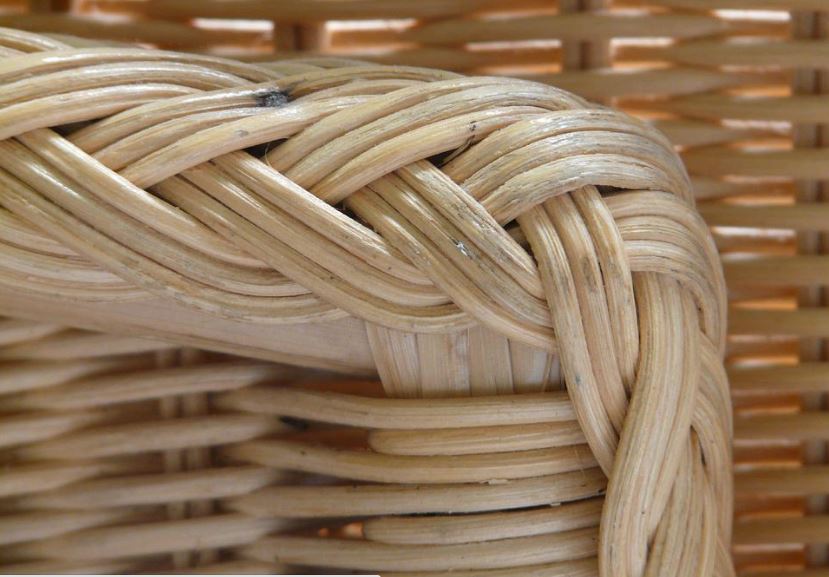Rattan furniture adds a simple, woven touch to your outdoor living area. Among the pluses and minuses of rattan furniture is while this furniture requires little upkeep, the woven material can break or unravel over time. Not to worry—synthetic and wooden rattan are simple to repair and can be done similarly.
There are various ways to repair and take care of rattan furniture, whether you are a home improvement expert, a DIY enthusiast, or even if you aren’t a big fan of DIY. This article serves as your guide to repairing rattan furniture.
Repairing Sagging Seats
All furniture will show signs of wear and tear, which may cause seating areas to sag over time. Various types of sagging can happen and require the use of different techniques to correct.
If the material has only slightly sagged, sponge it down with warm water before allowing it to dry completely for 24 hours. After that, the fibers should contract and wither back to their original shape.
Regularly spraying the seating with a fine plant mister will help keep the fibers taut. A cushion will also help because it will distribute the weight that is applied to the rattan furniture when it is in use. If excessive sagging occurs, the best solution is to add more cushions to balance out load distribution and relieve pressure on the rattan.
How to Restore Faded Rattan Furniture
If rattan furniture is exposed to UV rays for an extended time, it will lose some of its vibrancy. Of course, the simplest way to protect the furniture is to avoid leaving it in the sun for too long. An all-weather cover can help ensure that the material is properly protected when the furniture is not in use.
Even if your rattan furniture has become discolored due to UV rays or age, the good news is that you can easily paint to restore the material’s vibrant new appearance. To repaint rattan furniture, follow these steps:
- Clean your rattan furniture first to remove any surface dirt and dust. A soft brush will suffice, allowing you to get into the nooks and crannies. Then, utilizing a vacuum with a brush attachment, vacuum up any remaining debris.
- Apply a light sanding to the rattan. Sanding down any surface before painting allows the paint to stick to the surface far more easily.
- Use a mask and safety goggles, and make sure to paint in a well-ventilated area.
- If you want to spray paint, do so in the garden.
- Oil-based top coats and undercoats are the best types of paint to use and make sure to allow enough time between coats to dry.
Putting a Broken Leg Back Together
While it isn’t common, some people have reported having a broken leg on their rattan furniture set. If this occurs, they can be repaired, though a perfect match with the wood may be difficult to find.
To repair it, you’ll need to find a piece of wood with the same diameter as the furniture’s broken leg. This could be anything from your broom handle to a cheap second-hand piece of furniture.
To repair a rattan chair leg, follow these steps:
- Drill a one-inch hole through the broken leg’s center. Then, on the replacement piece of wood, repeat the process, making sure the hole is 5/8 inch in diameter (a standard doweling size).
- Instead of cutting the leg to the actual size you require, make it a little longer at first.
- Fill both holes with epoxy resin (wood glue) before inserting a two-inch piece of 5/8″ diameter doweling into the leg and pressing the replacement wood into the other end of the doweling.
- Place some weight on the chair to apply enough pressure to the new joint and let it fix into place while the glue dries firmly.
- You can gradually trim the new leg to the proper size to level it with the other legs.
Repairing Loose Strands
Split or loose ends are another issue owners of rattan furniture sets may occasionally encounter. If you observe this on your garden furniture, you should try to repair it because if left unattended, it could unravel and cause a much larger problem.
When it comes to loose strands, you need some superglue to get them back into place, and if you notice that some of the weaves are missing because of wear and tear, you can substitute them with new rattan material available online from craft suppliers.
Here’s how to repair loose strands on rattan furniture:
- Remove any loose old strands so that good cane can be seen on the weave.
- Soak a long length of new rattan in water for 45-60 minutes after measuring it. This will soften the substance and make weaving easier.
- Dry any excess water off your outdoor furniture and weave it through the affected area. You can pull it through each time with a pair of fine-nosed pliers.
- When you’re finished, glue the ends together and let them dry.
- You can also repair broken fibers of synthetic rattan with a small sculpting tool and the same resin. The tool is used to shape the material to match the surrounding material before allowing the adhesive to harden for one or two days.
Taking Care of Scratches and Marks
Unlike plastic rattan, natural rattan does not have to be varnished to protect it from damage. However, like any material, it will eventually show signs of wear and tear, particularly if it is frequently used and you have young kids and/or pets in the house.
If the furniture gets scratches and scuffs, you may want to add some extra protection. It’s a good idea to put yacht varnish on the material if you keep the rattan furniture in a humid, warm area (conservatories during the summer in particular).
Follow these steps to take care of furniture marks and scratches:
- Always start by cleaning the furniture to remove any surface dust or dirt. To avoid damaging the material during cleaning, use a brush followed by a vacuum with a brush attachment.
- Sand down the rattan with fine-grain sandpaper to make it easier for the varnish to stick during application.
- Follow the directions and add around three varnish coats if necessary.
- The varnish does not need to be applied regularly, perhaps only once every two years, and it should let you enjoy the furniture for an extended time.




